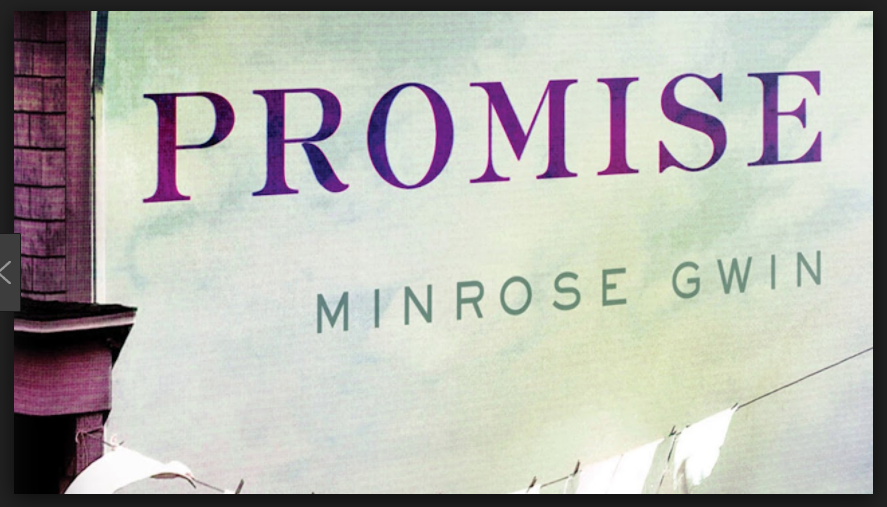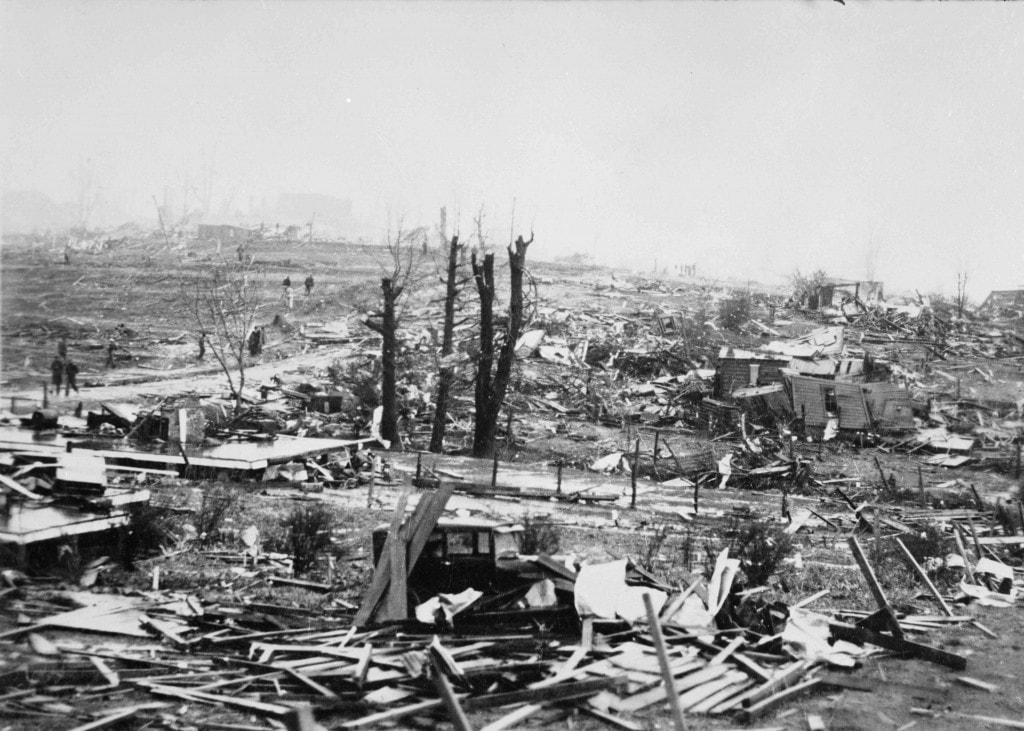A moving new novel by award-winning writer Minrose Gwin centers around the tragic Tupelo tornado of 1936. The Shoofly Magazine's book columnist Carole McKellar interviews the author and reviews the book.
Minrose Gwin will be at Pass Christian Books on Thursday, March 22 at 5:30 pm. She will talk about Promise and sign books. I hope to see you there, but, if you can’t attend, call the bookstore and have a copy signed for later pick up.
Although the characters are fictional, Gwin uses her intimate knowledge of Tupelo landmarks to provide readers with a vivid picture of the setting. Some places like the Lyric Theater and Reed’s department store remain in business today as they were in 1936. The Lyric Theater served as a makeshift hospital in the aftermath of the tornado.
The central characters are Dovey Grand’homme, an African-American laundress, her granddaughter, Dreama, and Jo McNabb, a white girl of sixteen. The McNabbs are a prominent Tupelo family, and Dovey does their laundry. She hates the family because Jo’s brother raped Dreama without punishment or legal consequences. Dreama became pregnant as a result of the rape and gave birth to a son named Promise. The characters in Promise are fully developed and complex. They display all too human emotions including guilt, hatred, and pride. I particularly liked Dovey who showed strength and resilience against a life of hardship. Jo and Dovey’s family are bound together by the horrific rape and their struggles after the storm. The events depicted take place between Palm Sunday, April 5, 1936 and the following Friday. The story is told alternately from the point of view of Dovey and Jo. After the storm, Dovey searched frantically for her family in the segregated makeshift facilities. She is eventually reunited with Dreama and her husband, Virgil, but they have to keep searching for Promise.
Jo’s story involves searching for her baby brother, Tommy. Jo's mother was seriously injured in the tornado and her father was not around. The two missing babies are at the heart of the story.
The depiction of destruction is drawn from actual photographs of Tupelo in the aftermath of the tornado. Gwin’s novel artfully creates an atmosphere and landscape that puts the reader on the broken streets with the characters and shares their suffering and despair. Her depth of research takes us to a lost time and culture. Minrose Gwin has a good ear for Southern phrasing and idiom. In that respect, she reminds me of Eudora Welty. I smiled when I read the phrase, “Katy bar the door” because my mother used that expression often when trouble was expected. I remember reading The Queen of Palmyra,* Gwin’s first novel, and thinking how true and familiar the characters felt to me. That book was also set in the Tupelo area. Minrose Gwin has been a writer all of her adult life. She began as a journalist, but found her calling as a teacher of English and creative writing at the college level. She most recently taught at The University of North Carolina at Chapel Hill. In addition to the two novels, she has written a memoir about her mother titled Wishing for Snow. In addition, Gwin wrote Remembering Medgar Evers about the slain civil rights leader who was murdered in 1963 outside his home in Jackson. I had the opportunity to ask Ms. Gwin a few questions which she kindly answered by email. 
How long did it take you to write Promise? There must have been a lot of research that went into the story.
Promise really chose me. I was in the revision stages of another novel, when I learned that the stories I'd heard all my life about the tornado weren't complete--that the casualty figures weren't complete because members of the African-American community of Tupelo hadn't been included. This angered me and spurred me to write the novel, which I hope excavates the deeper devastation of racial injustice. Counting research, it took about 18 months. Since I grew up in this town, the landscape was the easy part. It was the fastest book I've ever written. Both The Queen of Palmyra and Promise deal with racism and its history in our state. You also wrote Remembering Medgar Evers. What influences led you to write about race in this way? Yes, race is a topic I've dealt with in my scholarly work as well as my fiction and memoir, from the very beginning. I am interested in history and how history shapes us, but my books, unfortunately, are as much about the present as they are about the past. I am white, but I was fortunate to have an African-American babysitter named Eva Lee Miller and to stay with her for extended periods in her home. During my formative years, I got to know her friends and family, their struggles, from inside her home, and I got the benefit of her considerable wisdom and saw the incredible power of her resistance to the racism that embedded the culture, and of course still does. We were in close touch until her death. She was and is a major influence in my life and writing. Did you hesitate to write in the voice of Dovey given the political climate today? By that I mean criticism of men writing in the voice of women or whites writing as African-Americans. I don't use the first person voice for black characters in The Queen of Palmyra or Promise. In the first book, the narrator is a white woman recalling the summer she was almost eleven, and in the second, there's an omniscient narrator relating the story from the alternative points of view of Dovey, the African-American great-grandmother, and Jo, the white girl. So we get the voices of the black characters through a filter. To my knowledge, no one has objected to that in my fiction. In writing both of these novels, I was trying to directly confront the social justice issues that remain with us today. I read about your memoir, Wishing for Snow, about your mother, a poet. Do you write poetry? Who are your favorite poets? There was a period in my life I wrote poems and a few were published. I've been told that my prose is poetic so there must be some link there. My favorite poets? Among contemporary poets, my favorites are Joy Harjo and Natasha Trethewey. I've always loved Keats, Stevens, and Dunne. How has your career as a journalist influenced your writing? My few years as a journalist were pivotal in so many ways. They acquainted me with tragedy. They taught me to get the words down on paper (now computer screen), even if they weren't perfect. Journalism taught me to check my facts. I like fiction that's grounded in facts--the Tupelo tornado in 1936, for instance, in the case of Promise. I like to get details right, like what blooms when and where, like historical detail. Journalism taught me to observe the world closely. Do you write every day? Writing every day is especially important when I'm writing a first draft because you have a certain momentum you have to keep up, a certain drive. What writers influenced you? I love Mississippi writers! I'm a Faulkner scholar, so he's been a big influence, also Welty, especially the visual in her work. I love her photography too. There's a photo she took of a laundress back in the 1930s that made me start shaping the character of Dovey in Promise. I've read all of Toni Morrison's work, and taught most of it, so she's been an important influence too. *Bay St. Louis residents will be interested to know that a portion of The Queen of Palmyra was written in the Webb School owned by Ellis Anderson and Larry Jaubert. Gwin was working in New Orleans at the time and used Webb School as a writing getaway. Comments are closed.
|
Categories
All
Archives
July 2024
|
Shoofly Magazine Partners
Our Shoofly Partners are local businesses and organizations who share our mission to enrich community life in Bay St. Louis, Waveland, Diamondhead and Pass Christian. These are limited in number to maximize visibility. Email us now to become a Shoofly Partner!





























 RSS Feed
RSS Feed























